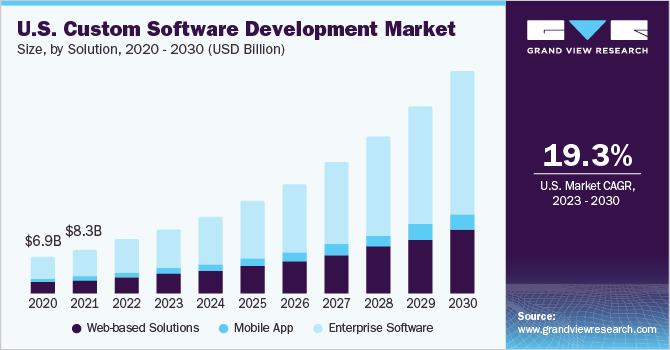Preparing for a Consultation: Can Excel Kickstart the Development of a Custom Software?

I get it, you’re probably frustrated with the time it takes to enter data into Excel. Whether it’s from paper documents or digital sources, organizing it consistently, while creating Gantt charts can be a time sink. This ultimately eats into your precious time, a resource that is always in short supply.
A dedicated application could speed up your team’s work instead of them being stuck in Excel all day. But somehow the spreadsheets work (even if they don’t), so you keep moving forward.
And when are considering custom software development, you think it is:
- Expensive – you’ve got to think about the budget,
- Time-consuming – building an entire application from scratch, seriously?
- We don’t have the resources for that – it speaks for itself.
The truth is that there is another way between these two extremes.

Here is our suggestion: use the Excel workflow to create a custom application faster and cheaper. Choosing a custom application is not a giant expenditure of time and money if you have been using spreadsheets for years.
If we got your attention, we will tell you more in this article. How can you improve your tried ways and processes of working with spreadsheets step by step? How can they be a basis for a custom solution at a low cost?
To Be (Custom) Or Not to Be?
So when should I go custom based on my Excel methods? When the process of working with data is so original and involves specific features that a custom application is useful.
I will give you some examples because they make this planet a better place:
1. If your business processes involve complex pricing or bundling structures, that can’t be efficiently managed using Excel or off-the-shelf software. A custom application can calculate and generate accurate quotes based on dynamic variables.
2. If you need to integrate the software with existing systems, databases, or third-party services that require specific connectors and APIs. A custom app makes it easier.
So how does it work?
For a custom software development vendor, you need to fully understand what is needed and what Excel procedures and workflows you already have in place. What causes the most wasted time, irritation, and errors? Let’s start by preparing and explaining the current methods you use and what you need to make it more efficient. All of this will be used to translate your spreadsheet workflows into a custom environment, not from scratch, but based on the way you work.
This will help the development team understand your business environment and the challenges you face. Custom is about adapting to the needs of YOUR project, not some generic idea.
We will show you how to prepare for a conversation with a vendor who can build a custom application based on your Excel processes. Here we go!
1. Inside Our Operations: Describe Company Internal Process and Handoff

Okay, start the conversation by sharing an overview of your company’s structure, industry, and core operations. Explain how your current processes function, such as the manual steps, communication channels, and any existing tools or software you use. This context is the key here to grasp the larger picture and find those integration points for the custom solution.
Let’s play a mind game. Imagine you run a retail business that sells electronics. You have loads of physical stores and an online platform. Inventory management is becoming tough because of manual tracking and those itchy differences between online and offline sales.
Describe the Process:
“First off, we’re running a retail business in different places – both physical stores and online. Currently, we’re monitoring what we have in stock using spreadsheets. But this can be a bit tricky, and every so often we run out of stuff when people want to buy, or we end up with too much sitting around.
To help with this, we use barcode scanners that help us update how much we have left. If we get new stock or sell something, we use the scanners to keep the numbers right. But, here’s the catch – things don’t update too quickly. There’s a bit of a delay before the numbers show what’s really happening. So, that’s where we are – working on making things smoother.”
- Communication: “We mostly use emails and phone calls to talk between our different store locations, and also between the physical stores and the online shop. But this way of communicating causes delays. It takes time to update stock levels and to fill orders.”
- Tools: “Right now, we use Excel spreadsheets to record what we have in stock. For online sales, we rely on an e-commerce platform. But it’s not always trouble-free. It’s a bit of a challenge to get the data to match between these systems.”
2. Where Are You Now and How You Want the Solution to Work?
Fine, now is the time for those irritating bottlenecks and for the never-ending objectives.
Clearly define the goals you aim to achieve through the custom solution. Use concrete examples and data if possible. Explain the pain points, inefficiencies, or limitations you’re experiencing with your current processes. It will help the dev team to understand the purpose of your project and its potential impact on your operations. They will be able to focus on crafting a solution that directly addresses your needs.
Let’s back it up with an example, not to operate on abstract ideas alone.
Overview: Let’s say… You manage a medical clinic with several doctors, nurses, and administrative staff. Patient records are currently managed using paper files and basic software, leading to inefficiencies and delays.

What are Your Goals?
- Introducing an integrated patient management system to improve administrative tasks.
- Eliminating the use of paper files for patient records.
- Reducing patient wait times.
What are the Pain Points?
- Paper-based patient records are the straight way to errors in data entry and difficulties in keeping the information up-to-date.
- Managing appointments manually, which simply makes waiting times for patients longer.
- No centralized system for prescriptions, errors in medication orders and refills.
The Problem and Potential Impact
Clearly state that the current manual processes are hindering efficient patient care and causing frustration among both staff and patients. Explain that the lack of real-time access to patient information is impacting the quality of medical consultations and decision-making.
What is the Desired End State?
- A user-friendly electronic health record system
- Patients receive automated appointment reminders
- Prescription management is integrated within the system
In this example, clearly defining the goals and sharing specific examples and potential issues helps the development team fully grasp the context and needs of the project. They just need to know the whole picture. Sporadically, a few additional scripts in Excel will be enough to optimize your workflow – other times a custom application is the way to go about it.
3. Walk the Developers Through Your Current Flow, Step by Step:
Now take the development team through your current workflow step by step. Provide details about how tasks are initiated, progress, and concluded. Highlight any decision points, handoffs between teams, and data inputs or outputs. Where is Excel in all this?
Another Example: Let’s say there is a logistics company. Currently, incoming orders arrive via their online platforms or phone calls. These orders are then manually recorded in an Excel spreadsheet, detailing items, quantities, and addresses. Warehouse staff cross-check inventory, assign drivers, and communicate routes through phone calls.
Drivers receive route and timing details on their phones before making deliveries and returning with signed notes. Still, doing things manually like this can cause mistakes and make it harder to handle more work as the business gets larger, and it is expected to continue growing.
How can Your Excel Processes Speed Things Up?

Creating a custom application from your existing Excel processes is a smart move that keeps your current workflows useful. Instead of starting from scratch, this approach builds on what you have, step by step.
Think of it as a gradual upgrade – you’re not throwing out the ways you’re used to, you’re enhancing them one step at a time. Your detailed Excel processes act as a road map for developers. They use this map to make the transition to the application smoother, while still maintaining the logic you’ve carefully built.
This way, you don’t surprise your team with a whole new tool. You’re working with what they already know. As the app comes together, your team can ease into it and adapt at their pace. This approach also makes it easy to review and refine the process. You can compare the app’s results with your Excel data to make sure everything matches. It’s a way to make sure the app works well with what you already have.
In short, turning your Excel processes into a custom app is a smart way to upgrade without losing what you’ve worked hard to create. It’s about respecting your existing methods and using them as building blocks to make things even better.